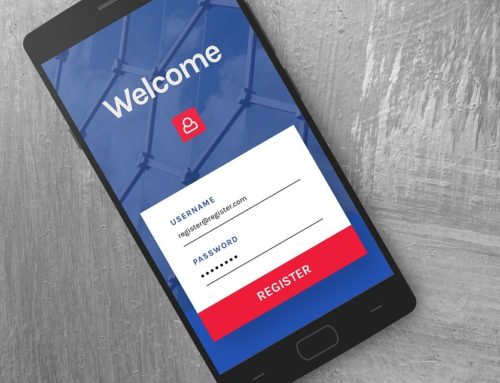If you’re like most modern businesses, your website is the center of your marketing efforts. It’s the hub that everything else leads to, including all of your advertising.
So it’s safe to say it’s important to get it right.
But what is right? Ultimately, your website is built for people to use. You hope that they will interact with your business, get information about your products and services, or purchase what you have to offer.
In this context, right, is a website that allows people to do those things freely and easily.
This is why there is so much talk in the web design and development industry about ‘user experience’. What we really want to know when we ask ‘is your website providing a poor user experience?’ is ‘do people enjoy using it and find it useful?’
Your online success depends on knowing the answer to this question.
So, how can you know? Here are two ways to tell and four things you can do to make a change.
How Can You Tell if Your Website Provides a Poor User Experience?
They say the first step to solving a problem is admitting you have one. But before you get there, you need to know how to tell. There are two main indicators that your website is not doing its job of engaging your audience: poor metrics and low conversion.
You can find this information in your website’s inbuilt metrics/analytics area or else in Google Analytics or a similar third-party application.
Your metrics are off

You should be checking in with your site metrics regularly. If not daily, then at least weekly. You don’t want to only notice a major issue a month down the line.
The most important indicators that something’s amiss are a high bounce rate and a lot of pogosticking.
- Bounce rate: when users click onto your site and then leave very quickly
- Pogosticking: when users click onto your site, promptly leave and click immediately onto a competitor site
Both of these behaviors indicate your site’s not giving them what they need or expect. And both need to be addressed.
Your pages aren’t converting
The average landing page conversion rate is between 2.35-5.31%. If yours is much lower, it suggests your website isn’t enticing people in like it should.
Conversion gets past simple notions of visitor quantity and peers directly into the realm of quality. If you have thousands of hits per day, your traffic is impressive. But if none of those hits are converting, is your page really working? Your wallet probably says not.
What Can You Do About It?
If you’ve checked your figures and things aren’t measuring up, you’re going to need to make some changes. There are some general principles to good, user-focused web design:
- Uncomplicated
- Meets expectations
- Flows well
- Not too many interruptions
- Not overpowering to the senses
The five main offenders below are the cause of many bad user experiences and much agonizing loss of business, simply because they violate these principles.
Get rid of design clutter
We get it. You learned a new function in WordPress, or saw a great new scroll-type on someone else’s page and you want to show it off. But having too many or too complex design elements, overpowering graphics and in-your-face themes is off-putting.
Yes, your website should be modern, you should follow some of the new design trends, and you should try to be unique. But people are primarily there to get information. If the design is so overpowering they can’t get to or understand it, you have a problem.
Pick some features you love and use them. Save the rest for when you inevitably want to update your site. Pick no more than three main colors for your theme and stick to this theme in your graphics.

You want to showcase your business, and unless you’re designing outfits for especially exuberant carnival goers, you probably want to keep it a bit low-key.
Slow loading speeds
The quickest way to lose potential customers is to not address your website’s slow loading speed. The average web user expects a page to load in less than two seconds. If they’re kept waiting any longer, they’ll leave to find a less frustrating site to spend money on.
The biggest mistake businesses make is not properly assessing their web hosting needs before signing up to a plan. There are some free, good quality web hosts. But free hosting is not for everyone. If you run a small blog or host a small portfolio online, free web hosting will do.
But if you intend to grow your business, you run an online shop, host multi-media posts or a lot of content, then it’ll be a struggle to keep up.
If your site is experiencing a lot of downtime, or your page loads slower than within 2 seconds, you need to find a new host and choose a hosting package that is suitable for your business’s needs.
Obnoxious advertising
People don’t like popups. Especially when they take over a whole page. The offense is particularly bad if the popup only serves to advertise, and what it’s advertised is completely irrelevant or self-serving.
For example, a popup offering your visitor a free eBook with content that is directly related to what they’re reading is probably not going to cause them to jump ship. But, a pay-per-click, third-party pop-up that exists to make you money is definitely going to make them to bounce.
Want to make sure you use popups in a smart way? Check out these Shopify cross-sell apps to do just that.
Some of the worst offending advertising is placed by free template providers and free web hosts. If you can afford to upgrade to paid services, it is usually worth it.

Terrible content
When running a website, it can be easy to get caught up in the look. Fancy features and beautiful designs are a lot of fun. But remember, your website exists to provide information. If it’s filled with hard-to-read content, you will be offering a poor user experience.
We’re not all natural wordsmiths, so it’s tempting to outsource content production to the cheapest provider. But poor content, especially content written by third party content mills, is going to damage your reputation and reduce your site’s conversion.
A good copywriter is worth their weight in gold. As with all advertising and marketing, the words you use are important. If you want to drive landing page traffic to your checkout, you need good copy.
Not device-responsive
Over half of all web searches are conducted on phones. In fact, only just over a third of people on the Internet at any one time are browsing on a desktop or laptop. What does this mean for usability?
If your website is not responsive, as in, it doesn’t adjust to being viewed on different screens, you have a massive usability problem. Poor responsiveness is one of the biggest causes of high bounce-rates.
Use a website template that is fully-responsive, or else get a web developer to update your existing site to suit all screens.

Final thoughts…
If you’re in business to make money, you need an effective website. And if you want your website to be worth its salt, it has to be easy and enjoyable to use. If you think you’re making any of these mistakes, it’s time for an online overhaul. Your users and your bottom line will both thank you for it.



